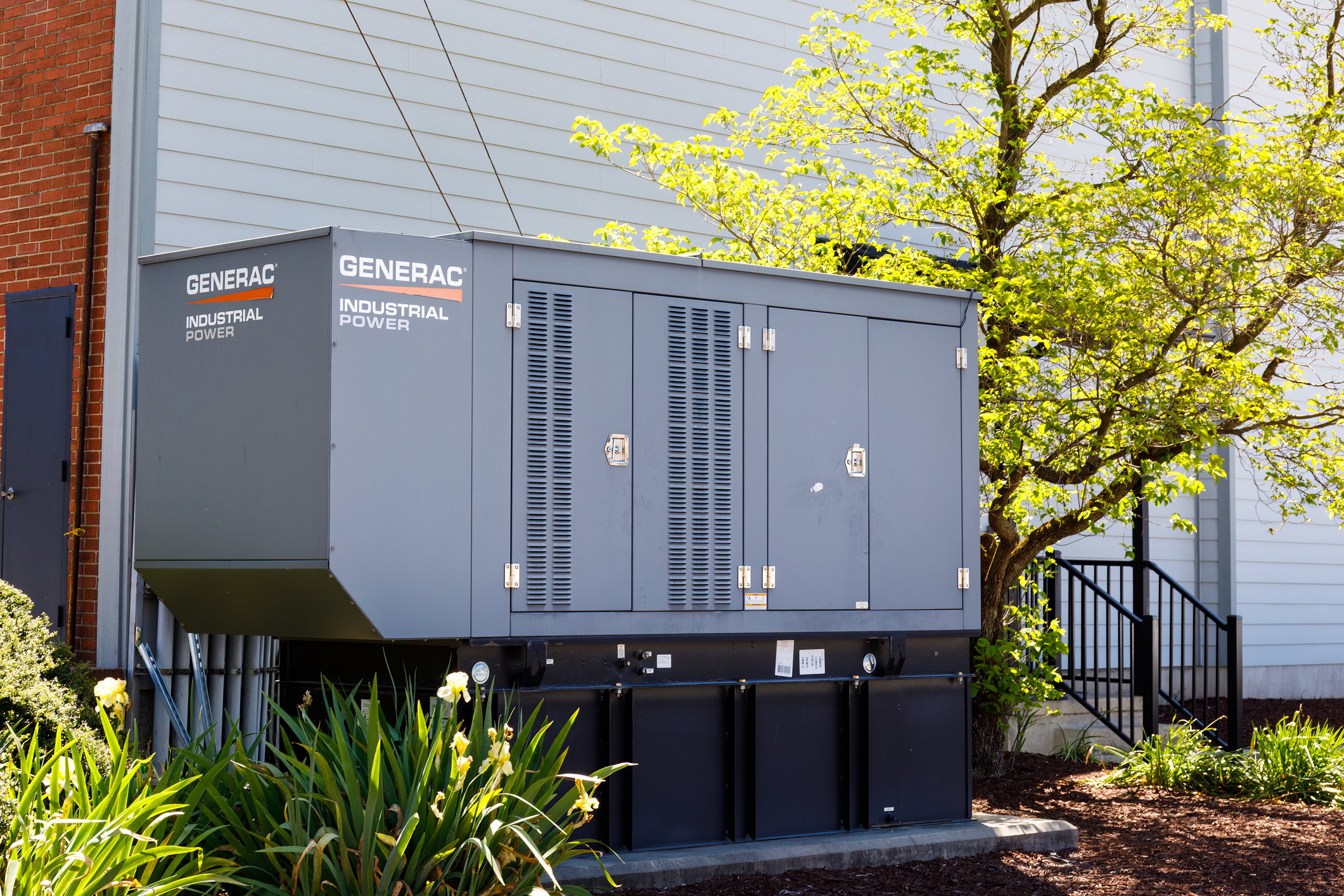7 Ways to Make Sure Your Generator Maintenance Plan Is Storm-Ready

Whether it’s caused by a hurricane, tornado, or flood, losing power without a ready and reliable generator can lead to serious consequences for your business, including:
- Financial loss
- Data loss
- Damaged equipment
- Legal repercussions and fines from regulatory non-compliance
- Low employee morale and a higher turnover rate
- Loss of customer trust and reputational damage
And let’s face it — no one can afford any of these.
Generator Failure Is Not an Option
Your generator is your business’s lifeblood when a power outage occurs. It’s an indispensable tool that keeps your business running, your employees productive and safe, and your customers serviced.
Just like your vehicles require regular inspections and proactive maintenance to keep them running optimally, so does your generator. Regular inspections and proactive maintenance ensure reliable operation so that your business operates without disruption when a power outage occurs.
Generators fail for various reasons, and even minor issues can escalate quickly, leaving your business without power. The most common causes of failure include:
- Component wear and tear
- Battery reliability
- Low levels or degradation of coolant and lubrication
- Fuel quality
- Physical equipment damage from floods, high winds, and extreme temperatures
To prevent generator failure, incorporate the following practices in your generator maintenance plan. Don’t wait for a power outage to find out something is wrong. Ensure your generator is ready and reliable before a storm strikes.
7 Critical Checks for Your Generator Maintenance Plan
1. Inspect and Test Your Generator Regularly
Regular testing — every 3 to 6 months — of your generator is crucial to ensuring that it’s ready and reliable when an outage occurs. Make sure you:
- Look for signs of wear, corrosion, or loose wires
- Check belts and hoses for cracks and deterioration
- Run the generator for 15 to 20 minutes to ensure it starts easily and runs smoothly
- Listen for any unusual noises and look for leaks or smoke
- Test your generator under load — powering something — to confirm it can handle the demand
2. Check and Change Fluids and Replace the Filters
Clean fluids and clean filters are essential for keeping your generator’s engine in top condition. Refer to your manual for specifics, but as a rule of thumb:
- Change the oil every 100 hours of operation or once per season
- Replace the oil filter when you change the oil
- Inspect, clean, and/or replace the air filter for sufficient air flow
- Replace coolant every 1,000 to 2,000 hours of operation or every 2 to 5 years, depending on generator type and manufacturer
3. Check Fuel Supply and Fuel Integrity
Contaminated or degraded fuel can lead to serious performance and reliability issues. Using clean, high-quality fuel and keep it properly stored. Best practices for handling fuel properly include:
- Always use the fuel type specified by the manufacturer
- Keep fuel fresh — gasoline lasts 3 to 6 months without additives; diesel can last up to 12 months, but degrades quickly without treatment
- Store fuel in clean, sealed containers or tanks and away from direct sunlight or heat
- Check fuel regularly for cloudiness, discoloration, sediment, or foul odor — all signs of contamination
- For diesel, inspect for microbial growth or sludge and add biocides to prevent contamination
- Regularly drain water from the bottom of tanks, especially for diesel
- Replace fuel filters on schedule
4. Examine the Spark Plug
A dirty or worn spark plug can cause poor starting, misfiring, and reduced fuel efficiency. Remove and inspect the plug and check for:
- Wear or damage, including a cracked porcelain insulator, worn or rounded electrodes, or broken terminal or threads — if any are present, replace immediately
- Carbon buildup or deposits — if mild buildup, clean with a wire brush; if the buildup is heavy, replace
- Check the distance between the electrodes (the gap) using a feeler gauge, refer to your manual for the correct specification, and adjust as needed — if the gap is too wide, it can result in a weak or no spark and hard starting; if it's too narrow, it can lead to poor combustion and reduced power
5. Check the Battery
If your generator uses an electric starter:
- Make sure the battery is fully charged
- Check terminals for corrosion and clean as needed
- Test the battery’s voltage and replace it if it’s weak or over 3 years old
6. Check Cords and Transfer Switches
Ensure adequate power delivery, prevent electrical hazards, and ensure safe and reliable operation by:
- Inspecting extension cords for damage or fraying
- Testing your manual or automatic transfer switch
- Making sure cords are rated for the load and suitable for outdoor use
7. Store Securely
Storage directly impacts your generator’s longevity, safety, and performance. Keep it in top condition by:
- Storing in a clean, cool, and dry space with easy access and preferably covered, especially for portable generators
- Keeping the area around it clear of debris, brush, or obstructions, and ensure proper ventilation, especially for standby generators
- Cleaning the generator before storing
- Disconnecting the battery
Stay Prepared Year-Round, Hurricane Season Isn’t the Only Threat
We’re nearly two months into Atlantic Hurricane Season (June-November), and while it’s been relatively quiet so far, that’s likely to change. Hurricane activity typically ramps up in August, with September being the most active month of the season.
Now is the time to ensure your generator is ready and reliable. Taking proactive steps today can help safeguard your business from unexpected power outages — not just during hurricane season, but throughout the entire year.
While hurricanes and tropical storms tend to dominate the headlines, the reality is that storms and outages happen year-round. There’s no off-season when it comes to power loss.